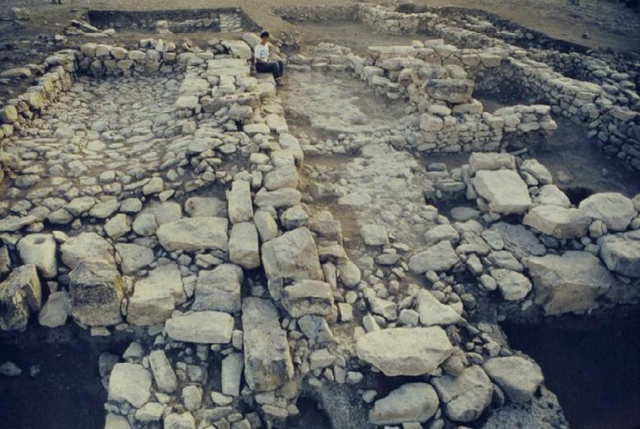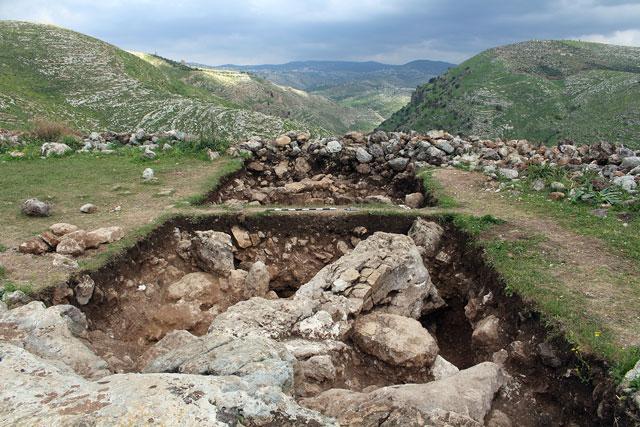You are here
New dating methods shift perceptions of Early Bronze Age in Levant, scholar says
By Saeb Rawashdeh - Oct 06,2016 - Last updated at Oct 06,2016

Suzanne Richard
AMMAN — Bayesian modelling, a method of statistical analysis, applied to Radiocarbon dating, has changed perceptions of the Early Bronze Age in the Levant, a leading scholar said.
The new methods of analysing data have led to a shift in the chronology of the Early Bronze Age up to 200 years earlier than previously thought, said Suzanne Richard, a professor of history and archaeology at Gannon University in Erie, Pennsylvania.
The new dates also bring new chronological alignments between different areas, like Syria and southern Levantine sites, Richard explained at a recent lecture at the American Centre of Oriental Research in Amman.
The archaeologist has been working in Jordan for around 30 years and is an expert in the Early Bronze Age who has led 12 field seasons, most recently to Khirbet Iskandar in Wadi Al Wala south of Madaba, around 30km southwest of Amman.
New research has shifted the dates of the Early Bronze Age, said Richard. The dating of Early Bronze III period has shifted from 2750 BC to 2900 BC, while Early Bronze IV is now dated at 2570 BC-1950 BC, a shift from 2350 BC-2000 BC.
The two periods are now in sync between the northern and southern Levant, noted Richard.
“The ‘Amorite pastoral-nomad invasion/destruction hypothesis’, although not the only theory, has been so pervasive throughout the literature that it has reached the point of unquestioned acceptance by many scholars until recently,” the professor explained.
New information from excavations and surveys reveal a strong permanent sedentary component to the Early Bronze IV population in the southern Levant, as well as a pastoral-nomadic one, she stressed.
“At the beginning of the Early Bronze III period, the urbanisation process revitalised itself. The number and size of the urban centres in this period show that urbanism in Palestine-Transjordan had reached its zenith. These sites feature the most massive fortifications yet seen in this age.”
The Early Bronze III period in Palestine and Transjordan was thought to correlate with the same historical epoch as the Old Kingdom period in Egypt, with extensive construction of monumental pyramids.
However, given the new chronology, it is becoming clear that the Early Bronze IV period is now synchronised with the end of the Old Kingdom (5th-6th dynasties) through the First Intermediate Period, according to the scholar.
This shift is “really quite monumental” in terms of historical synchronisms with Syria and Egypt, according to Richard.
The new chronology makes it possible to eliminate certain data often cited as causing the end of the urban Early Bronze III period, because with the new dates, the factors occurred too late.
For example, 5th and 6th Dynasty Egyptian texts and reliefs that allude to “campaigns against the Asiatics” now are coeval with the Early Bronze IV period.
Likewise, Amorites and the major climate impact of 2200 BC and later could not have brought down the cities of Early Bronze III.
Instead, the economy was probably weakened by cessation of trade with Egypt towards the end of the 4th Dynasty, when Egypt shifted to trade by sea with Byblos, said the professor.
Khirbet Iskandar is one of the most significant sites for understanding of the collapse of urbanism and the transition towards a rural economy in Early Bronze IV (2500 BC), Richard claimed.
“The stratified profile at Khirbet Iskandar, like the evidence for multi-phase occupation at other sites in Jordan, affirms a significant permanently settled population in the Early Bronze IV period,” she underlined.
“The site of Khirbet Iskandar, well known as one of the best exemplars of a permanent agricultural settlement in the EB IV (2550-2000 BC), sits astride the ancient ‘King’s Highway’, on the north bank of the Wadi Al Wala, just north of Theeban.
“Current excavations now focus on the earlier, urban settlement at the site and the nature of the transition to the non-urban period,” she continued.
Richard illustrated a wealth of comparative data to make the point that the Early Bronze IV rural agrarian sites illuminate a far more complex lifestyle than is indicated by the pastoral-nomadic sites.
Richard surveyed several sites where there is evidence of highly developed production and distribution systems in, for example, ceramics and metallurgy.
Feynan in the southern Jordan Valley is well-known for its Early Bronze III-IV mining establishment
Early Bronze IV cemeteries, which were once thought to be isolated and indicative of pastoral-nomadic traditions, are now associated with sedentary settlements, as at Khirbet Iskandar, said the archaeologist.
During excavations of an Early Bronze IV “public complex” at Khirbet Iskandar, hundreds of vessels were found indicating a storeroom, along with miniature vessels and traces of rituals, cults and religions, possibly representing a fertility or ancestor cult at the site, Richard elaborated.
However, the year 2000 BC was a turning point as the settlement was abandoned and never populated again, the scholar said. Research on the geology of the area has shown that a drying trend gradually made agriculture impossible in the area.
What the data from Khirbet Iskandar show is that strong continuities with Early Bronze tradition along with influences from Syria characterised the Early Bronze IV period in Transjordan, including some evidence for social stratification, Richard concluded.
Related Articles
AMMAN — The Early Bronze IV (c. 2,500- 2,000BC) in the ancient Near East was marked by a systematic change.
AMMAN — During the Bronze Age, olives became “an integral part of Jordanian social fabric”, having been domesticated in the Levant, then in
AMMAN — For decades, many scholars have attempted to connect the Bronze Age with urbanism in the Levant and some of the archaeologists and h


















